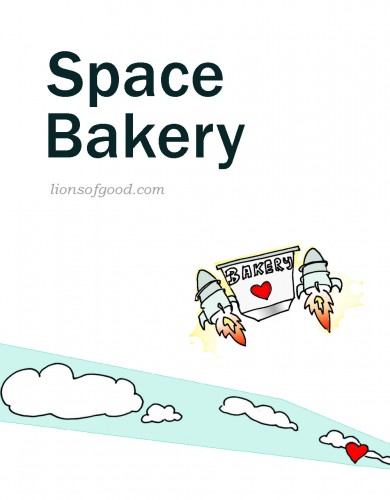
Simple Writing Bullet #4: Don’t reinvent the wheel. Never begin with a blank slate – start from the most successful, proven, and enduring models of all time.
Writing to drive action is not about slinging fancy words. It’s about knowing things.
And fixing what you don’t know.
What you don’t know hurts you twice: Once because problems become harder than they need to be, and twice because as long as you don’t know, you can’t make the pain go away.
In general, the first step to fixing what you don’t know is admitting you have a problem. Then, having the courage to ask the right questions.
So, today, as an example, I’m going to share with you a golden nugget of knowledge. Be careful: It’s dangerous. Not only will this be the biggest spoiler for every hero story you will encounter for the rest of your life, this knowledge can drive you to question your faith or even renounce your religion. It has even saved many lives and fueled many wars.
I’m about to reveal THE original hero story. The grandaddy Alpha of all immortal hero stories.
In this case, the big question is:
“What do Jesus, Buddha, Prophet Mohammad, Odysseus, Beowulf, Gilgamesh, Hamlet, Hercules, King Arthur, Luke Skywalker, Batman, Superman, Spiderman, Neil Gaiman’s Sandman, Harry Potter, Simba the Lion King, and Neo in the Matrix ALL have in common?”
Maybe your Bio page needs updating, or you maybe you’re helping someone write his or her About Page. If so, wouldn’t you like to know the secret similarities among these timeless hero stories? Don’t you think there just might be something valuable you can swipe and apply in your own writing?
I sure did. And if you dig, you’ll find all roads lead back to…

The Monomyth – a.k.a. The Hero’s Journey – described by Joseph Campbell in “The Hero with a Thousand Faces”
If you laid any of the best hero stories over the Monomyth template, you’ll notice the dots line up.*
Let’s try one, shall we? Have you seen Disney’s Lion King?
- Intro: Simba lives happily with his parents. His father, Mufasa, is king of the jungle.
- Call to adventure: Mufasa is killed; Poor Simba is tricked into thinking it’s his fault.
- Cross the threshold: Simba consults his evil uncle Scar (guardian of the threshold), who convinces him to flee the kingdom. Simba crosses the desert.
- Tests and helpers: Simba almost dies in the desert, but is rescued by Timon and Pumbaa. “Hakuna matata!”
- Challenges and temptations: Simba grows up; bumps into old friend Nala, gets flooded with guilt, refuses to return. Wise bird Rafiki leads him to a pond where the specter of Mufasa reminds him who he is.
- Resurrection and transformation: Simba realizes he inherited Mufasa’s authority and character. Simba returns to Pride Rock, battles hyenas, confronts Scar as the rightful king and defeats him to reclaim the throne.
- Return as “Master of Two Worlds”: Simba marries Nala, has a son and becomes both king of the jungle and a father, like Mufasa.
(Nope, I’m not going to do Jesus. You can trigger your own existential crisis yourself. Okay, I’ll help: The existential question is, “Is this merely a coincidence?”)
The monomyth is a powerful pattern. The stages can be tweaked, reordered, added or dropped without losing their power. It’s the values that are important — a young hero seeking magic swords from old wizards, fighting evil dragons in dark caves, etc. These are symbols that can take many forms. And stories imbued with these symbols will outlive us all.
The point I’m trying to make is…
To write better, you don’t have to improve your writing. You have to invest in a habit of knowing things.
Your problems are not new. They’ve been solved many times over and over throughout history. If you ever feel you’re starting from scratch, it’s a sign you’re doing it wrong.
Those who struggle to invent are those too lazy to study the successes all around them.
Why ignore successful formulas that endured for thousands of years?
Anyway, I hope this sharpens your pen, and you’ll add it to your toolbox.
Just don’t get too excited and run off like a child with a rubber stamp! Remember, Rule #1 is Always start with WHO. Be crystal clear who you’re talking to and who you’re trying to attract. Rule #2: find out what Means everything to them.
Then (and only then), highlight key facts about your life in your origin story (don’t lie — you’re not writing fiction), taking hints from the Monomyth. We all have our story. You don’t have to make anything up. You just have to know what makes your story powerful and feature them.
If you’ve been following me for a while, you’ll know I enjoy challenging what you know and making you feel uncomfortable. You can count on me to never tell you what you want to hear, but only what you need. Most people don’t like this. (I seem to repel people who can’t stomach the truth or scamper from real work.)
But, if you like this writing series so far, stay tuned. I’ve got many more juicy tips cooking on the back burner. The kitchen’s getting hotter.
(* If I helped you develop your business persona or personal narrative, you have no doubt seen the Monomyth in action in your own story, but never realized the deeper structure behind the words. The curtain’s peeled: it’s a good exercise to compare your story, so you know what makes the magic work.)



Add your comment: